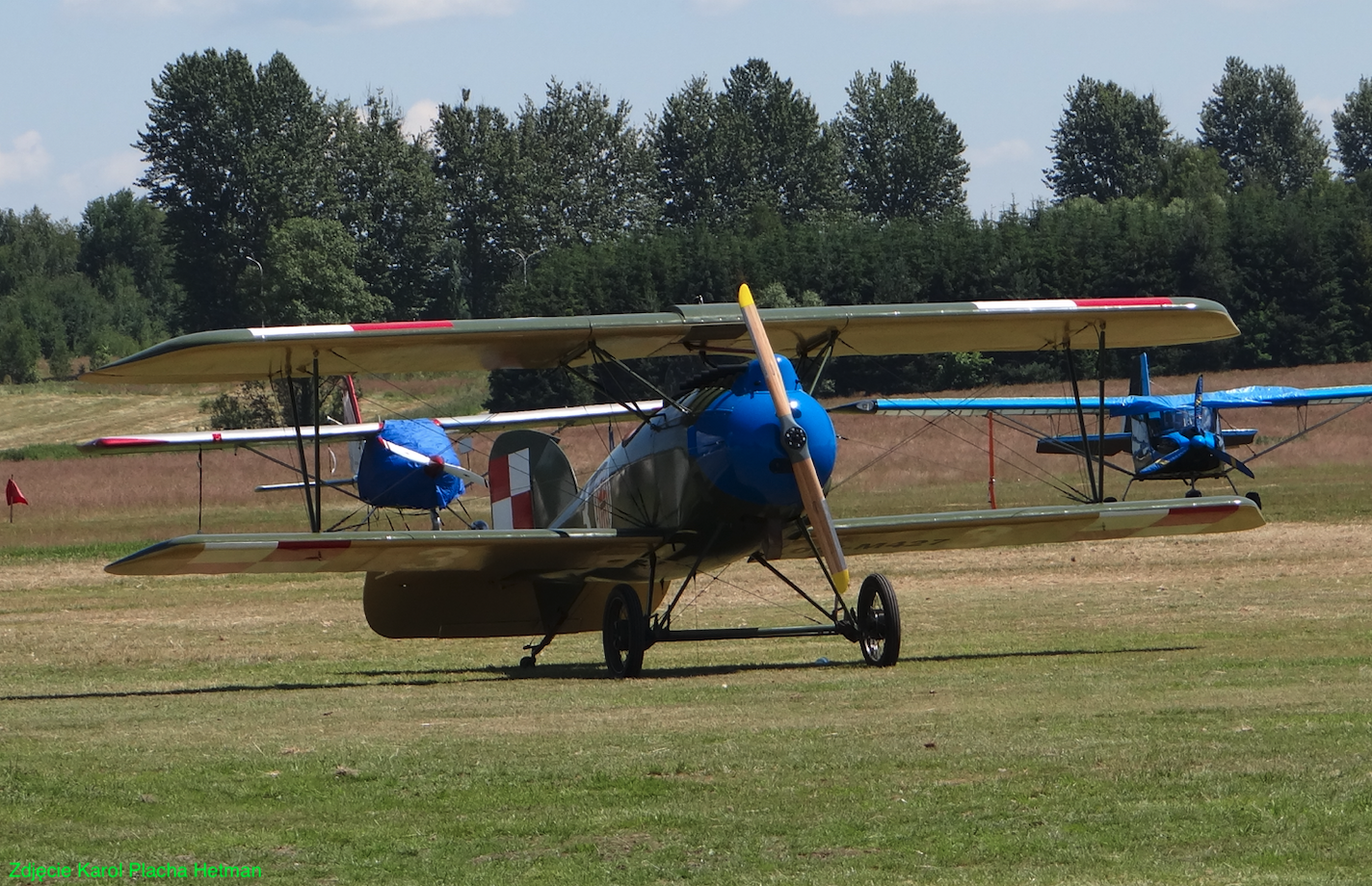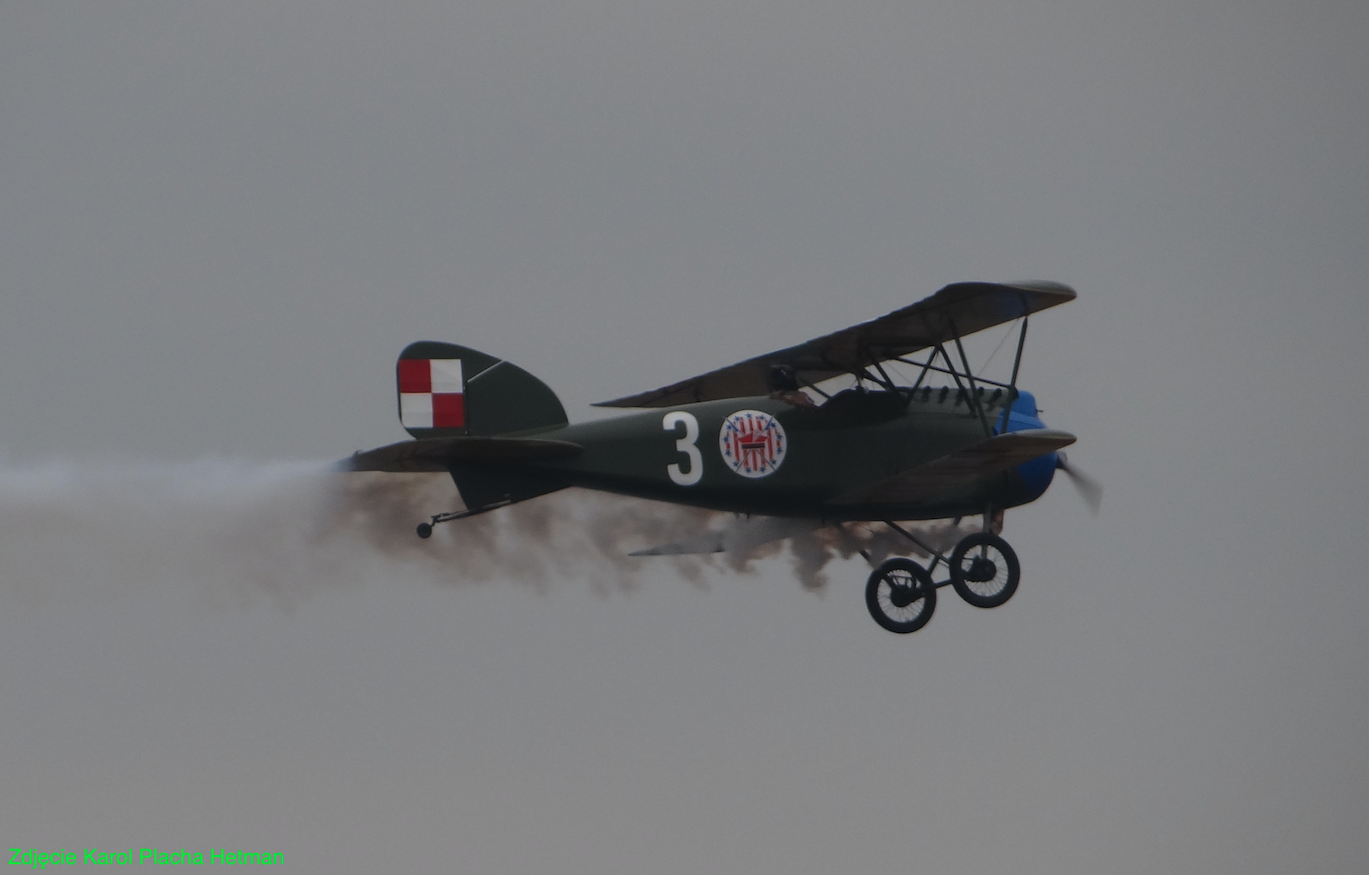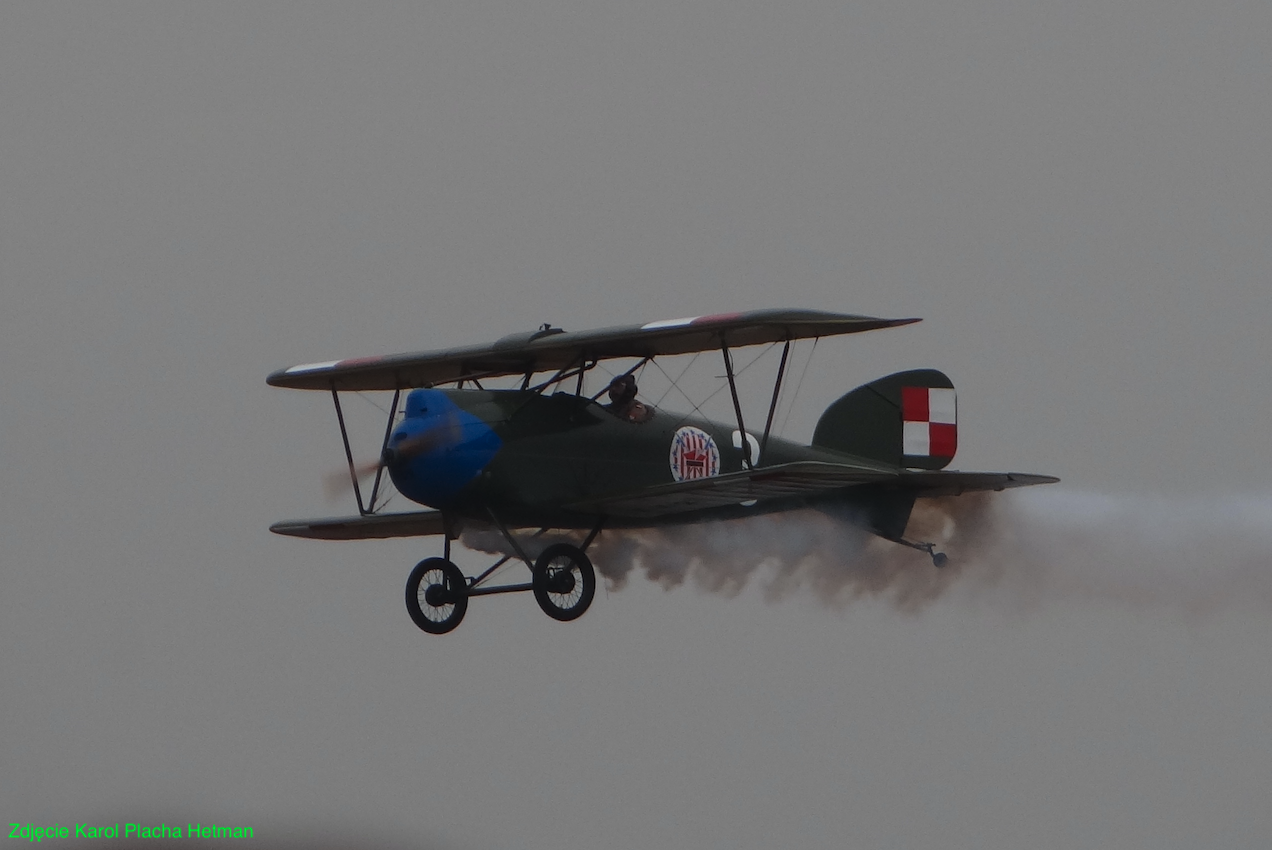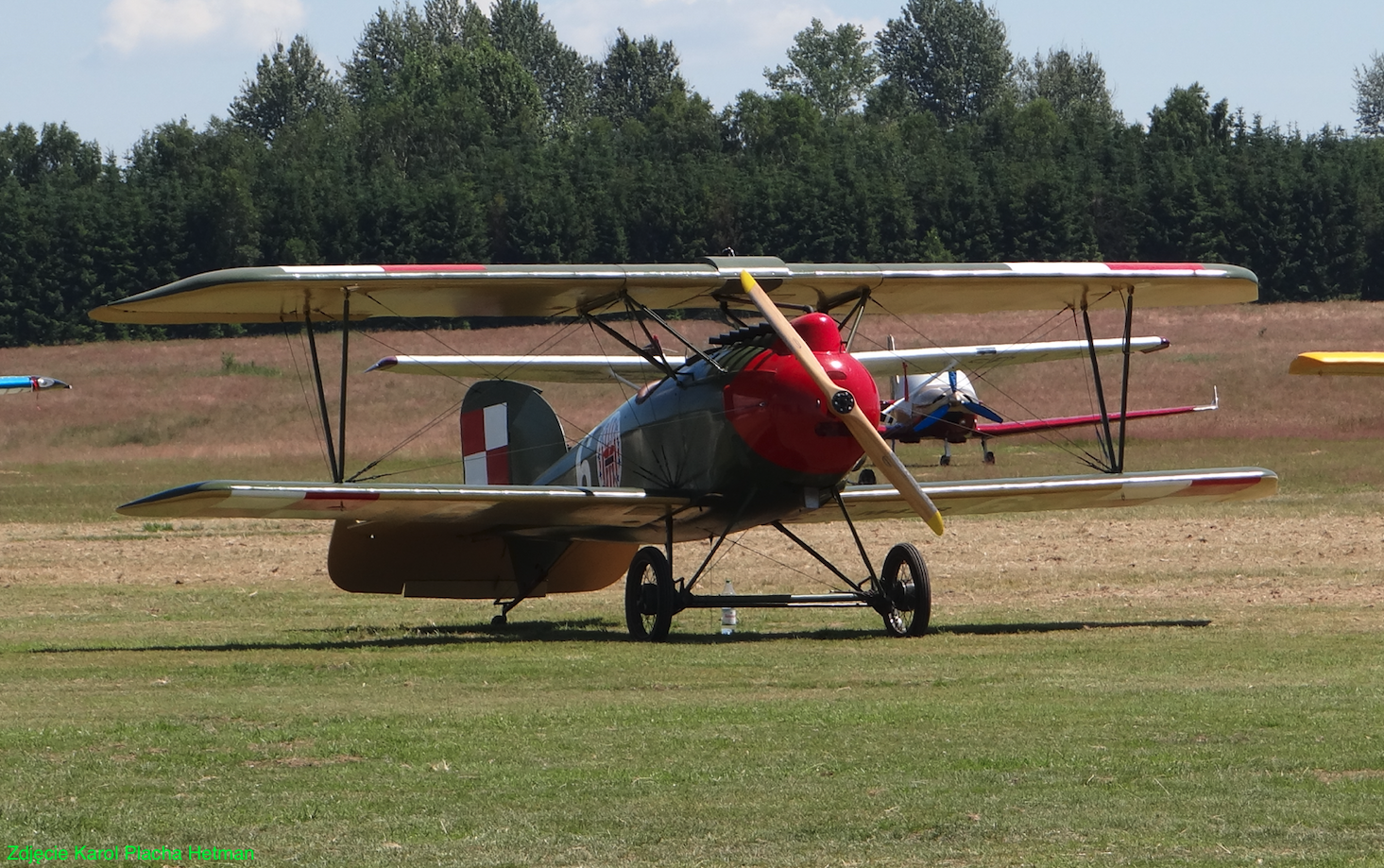Nowy Targ 2023-07-12
Albatros D.III.
00116a Section 1916 year.





The history of the construction of Albatros aircraft.
The Polish Aviation Museum in Kraków in Czyżyny is the only museum in the world with as many as four Albatros aircraft used during and after the Great World War. These are Albatros C.I reconnaissance aircraft from 1915, Albatros H.I high-altitude aircraft from 1918, Albatros B.IIa training aircraft from 1919, Albatros L-101 training aircraft from 1932. (The given dates are the dates of their construction, not development).
Albatros Flugzeugwerke GmbH is a German aircraft manufacturer founded in December 1909 in Berlin's Johannisthal district. Initially, it was called Albatros Werke AG. It was located at one airport together with the companies: LFG and Rumpler. The Albatros company designed and produced mainly fighter aircraft, as well as destroyer, reconnaissance and training aircraft. These planes were used by the Central Powers during the Great World War. Initially, Ernst Heinkel worked as a constructor in the factory.
In 1913, the Albatros company opened a large branch of the plant in Schneidemühl, now Piła, on the premises of the Ostdeutsche Albatros Werke airport, in short OAW. OAW plants produced aircraft until 1919, when they were closed under the provisions of the Treaty of Versailles. During the Second World War, on the premises of the former factory, there was a German transit camp for the Polish population deported to Germany for forced labor, known as Albatros.
The Albatros Flugzeugwerke GmbH plant started with license production of aircraft known as Albatros Taube and Albatros Doppeltaube, based on the Rumpler Taube aircraft. In total, the company developed and produced 18 types of airplanes. The most famous aircraft of this manufacturer are Albatros D.III and Albatros D.V fighters. During the Great World War, the plants built about 10,350 of all Albatros aircraft. In 1932, the plant was incorporated into the Focke-Wulf company.
The Albatros Flugzeugwerke GmbH factory developed the Albatros B.II aircraft on the basis of the Albatros B.B aircraft in 1914, and the Albatros C.I aircraft in 1915. The main constructor was Robert Thelen. The two machines are structurally very different from each other. The main difference is the purpose of the machine. The Albatros B.II aircraft is an unarmed aircraft intended for reconnaissance and training. The Albatros C.I aircraft is an armed machine. For a long time both types were produced in parallel.
Albatros B aircraft were produced in two varieties; as the Albatros B.II multi-role aircraft and the Albatros B.IIa as a dual stern. As mentioned, the Albatros B.II planes were not armed, but the examples used by the Austro-Hungarian air force were equipped with one fixed machine gun firing through the drive wheel (propeller disc). Albatros B.II aircraft were produced in the period 1914-1918, in at least four factories. It is estimated that over 3,000 Albatros B machines were built.
Albatros B aircraft were equipped with weaker engines. In-line engine, usually Mercedes DI, 100 hp (74 kW), on Albatros B.I and B.II versions, and on Albatros B.IIa versions, 120 hp (88 kW) Mercedes DII in-line engine. Due to lighter engines and less additional equipment, the Albatros B.II aircraft were over 100 kg lighter than the Albatros C.I. They also had a lower maximum speed and a lower maximum ceiling.
The Albatros C.I aircraft was the first successful combat aircraft of Albatros Flugzeugwerke GmbH, used on a massive scale during the Great World War. In addition to the German army, the planes entered the armament of the Polish Army, Bulgaria, Turkey, Sweden and the Lithuanian army. The plane has a crew of two. In the rear cabin, a 7.92 mm (0.312 in) Parabellum MG14 machine gun was mounted on a turntable. This was not the only armament of the aircraft. The crew took bombs on board. Usually 10 kilos. The bombs were dropped manually by the rear gunner-observer.
When the Albatros C.I first appeared, in early 1915, at the front. Good performance and a powerful 110 kW (150 hp) Benz Bz.III engine gave the aircraft an advantage over most Allied aircraft. Subsequent versions were fitted with more powerful engines, culminating in the 130 kW (180 hp) Argus As III, which allowed the final version of the Albatros C.Ia to reach a speed of 140 km/h (87 mph) at sea level and an operating ceiling of 3 000 m (9,840 ft).
The aircraft was initially used as an observation and reconnaissance aircraft, without armament (as the B-class, i.e. Albatros B). He started hunting activities relatively quickly, using a machine gun mounted on a turntable in the rear cabin. That is why a new class C was created - armed - Albatros C. The aircraft was even partially successful. However, he had to recognize the superiority of single-seat fighter aircraft with fixed machine guns. The Albatross was more successful as a destroyer aircraft. The powerful engine allowed to take up to 6 10 kg bombs.
Albatros C.I was so successful that its production was also undertaken in the LFG factories located at the same airport and in the BFW plants, later Messerschmitt AG plants. Production for the Austro-Hungarian aviation was also undertaken by the Austro-Hungarian Albatros Works in Stadlau near Vienna, under the designation Albatros B.I(Ph). Components for Albatros aircraft were produced in one of the Albatros factories in Warsaw. Some sources say that complete airplanes were built there.
An interesting fact is that different radiators are used in Albatros aircraft to cool the engine. There were radiators mounted to the sides of the fuselage and radiators mounted above the engine, in front of the upper wing.
Albatros D.III.
The Albatros D.III was another Albatros fighter aircraft, modeled on the D.I and D.II designs. The prototype made its first flight in September 1916. The aircraft was made as a single-seat biplane. The structure was mainly made of wood with few steel elements. A piston engine, in-line, 6-cylinder, type Mercedes D.IIIa, 160 hp (118 kW), i.e. the same as in previous designs, was used for the drive.
The main advantage of the aircraft was to be a quick vertical maneuver (ascent and descent). The aircraft was to be resistant to large changes in overloads. The Germans, who followed the example of the French Nieuport aircraft, also used different upper and lower wing chords. The lower lobe had a smaller chord. Each wing is single-girder and covered with fabric. The panels were connected with V-shaped posts. A classic tail with a large surface was used. The engine drove a two-bladed fixed propeller. A large cap was put over the propeller paste. However, this hubcap caused problems during maintenance and engine cooling, so mechanics often did not put it on.
The Albatros D.III aircraft turned out to be successful, but it also had disadvantages. The lower wing had low stiffness and there were cases of wing damage in flight. Especially with sudden maneuvers. For example, when recovering an aircraft from a dive. The main reason was the "V" shaped posts instead of "N" shaped ones.
A total of 1,340 Albatros D.III aircraft were produced, mainly at the Ostdeutsche Albatros-Werke factory in Piła. License production of the Albatros D.III (Oef) version was undertaken in the Austrian Oeffag plant.
T-T Albatros D.III data:
Span 9.05 m upper wing and 8.81 m lower wing. Length 7.33mm. Height. 2.98 m. Curb weight 660 kg. Take-off weight 885 kg. Top speed 175 km/h. The rate of climb to 2,000 m is 6 minutes. The rate of climb to 5,000 m is 25 minutes. Maximum ceiling 5,500 m. Flight endurance 2 hours. Armament: two 7.92 mm machine guns.
Albatross in the Polish Army.
The first Albatros planes were taken over at Rakowice Airport. Their number is estimated at less than 15 copies. There were about 15 more planes on Ławica and in the airship hall in Winiary. There were less than 30 machines in total. We bought 30 new Albatros B.II aircraft from the plants in Austria, intended for training. However, some of them were armed and sent to war against Muscovites. The number of all Albatros machines did not exceed 65 copies. Some of the aircraft took part in the war against Ukrainians and Muscovites. It should be noted that at that time it was not possible to keep accurate statistics. Captured aircraft were in poor condition and even after renovation they did not make more than 3-5 flights. After the war, in 1921, the Polish Army owned about 20 machines. They were scattered around all Polish airports. At that time, they performed training and liaison flights. Few machines survived until 1924, when they were transferred to civil aviation, where they survived until 1930. Albatros B.II in Bydgoszcz served the longest in the Polish Army, until 1927.
The fuselage of the Albatros C.I No. 197/15 aircraft is at the Aviation Museum in Krakow. Until 1918, the aircraft was in the equipment of the German Air Force, which operated it in Pole Mokotowskie from 1917. The Germans managed to rebase the plane to themselves. The aircraft had to assume civilian colors. Then it ended up in the Berlin aviation museum. In 1945, it was found in a scrapyard near Czarnków and deposited in the premises of the District Aviation Depot in Gądki near Poznań. Then it was stored in warehouses in Pilawa, and then in Wrocław, from where it was transferred to the Museum of Aviation and Astronautics in Kraków in 1963. After renovation, since May 1993 it has been exhibited in the exhibition of aircraft from the Great World War.
The second, presented at the Polish Aviation Museum, comes from the post-war series and bears the serial number 10019. Produced in 1919, it is one of the longest-operated airframes, because it flew until 1940. Under an agreement between the Polish Aviation Museum in Krakow and the Berlin Museum of Communications and Technology, the airframe was restored in 1986 in Germany, giving it a fictitious painting and marking imitating the Albatros D.IIa number 1302/15, named "Ada" (from Ada Sari, a famous opera singer at the time). A similar plane flew in 1920 at the Officers' School of Aviation Observers in Toruń.
After the Great World War, the Polish Army of Albatros D.III aircraft acquired about 10 copies. In 1920, at the Ławica airport, two more copies were built from the crashed planes. In addition, there were 38 Albatros D.III (Oef) aircraft in the Polish Army and they mainly took part in the period of 1919-1920, in the war with Muscovites (Bolsheviks). From 1923, all the remaining Albatros D.III planes were gathered at the Ławica airport, where they served in the 3rd Aviation Regiment, initially as combat and then as training aircraft. The last copies survived until 1932.
Albatros D.III replicas in Poland.
Nowadays, aviation enthusiasts, led by Mr. Krzysztof Cwynar, decided to build flying replicas of Albatros D.III aircraft. Mr. Krzysztof Cwynar is the owner of the airport in Stara Wieś near Brzozów in Podkarpacie. The Albatros D.III machine, i.e. a single-seat fighter aircraft, which, fighting in the 7th Fighter Squadron, definitely contributed to the victory of the Polish Army over the Bolshevik army, commanded by the illiterate Budionny. The main reason for the creation of replicas was the desire to remind young American pilots who fought for our freedom as volunteers.
Polish engineers decided to build three replicas of the Albatros D.III aircraft at once, one copy for each of the builders. All three men are active pilots. Construction was underway at the airport in Stara Wieś near Brzozów in Podkarpacie. In Stara Wieś, where the church and museum of the Jesuit Fathers and the Biblical Garden are located.
The builders had no financial backing and all the money spent came from their own pockets. In June 2021, all three aircraft were successfully flown. The planes were painted green, received the emblem of the 7th Fighter Squadron and board numbers 3, 5, 6. You should know that although the planes are based on plans, they had to be developed practically from scratch, because they had to meet current aviation requirements in order to obtain airworthiness certificates. Each replica was built in the take-off weight category up to 600 kg and has dimensions reduced to 90% of the original. In addition, there is no flying replica of the Albatros D.III aircraft in the world. A big problem was the development and construction of the hull itself, which does not have many flat surfaces. The originals were covered with plywood and slats, and the builders used sheet metal. Individual elements were laser cut, turned and milled. In addition, a modern engine had to be installed in the nose of the aircraft. The builders managed to keep the shape of the fuselage faithfully. The popular Rotax 912 engine with a power of 100 hp was used for the drive.
Written by Karol Placha Hetman
